Afropreneurs: Meet the Designer Reinventing Nigerian Workspaces
Remi Dada's Spacefinish is shaking up design to create futuristic work environments for African companies
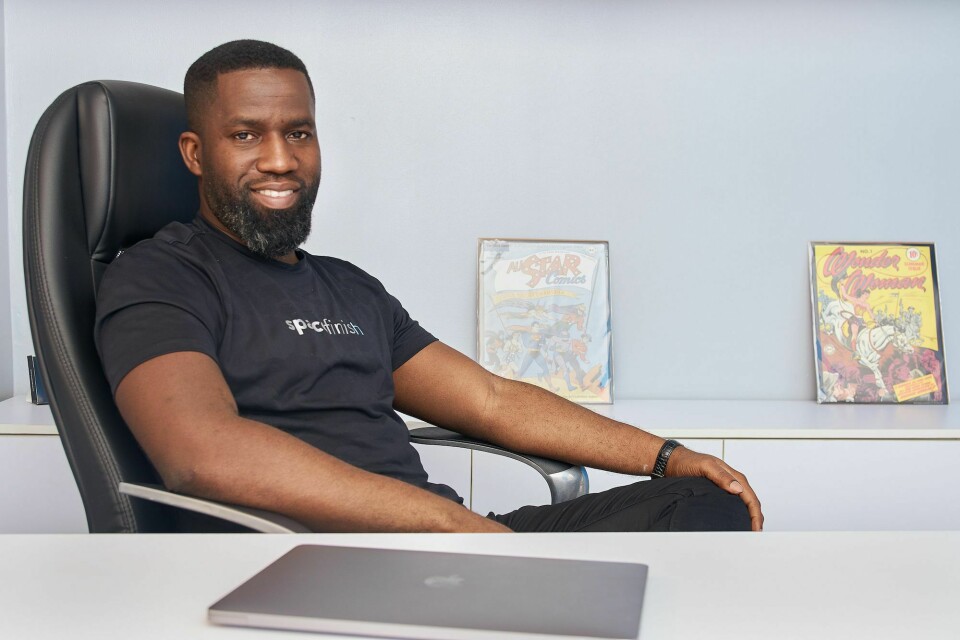
In the digital age when a fancy rectangle in our pockets can find us whatever we want, customize it and deliver it to our door, it's odd that the same thought process isn't also applied to physical space. Why does every parking lot feel exactly the same? Can waiting rooms be designed to make time pass more quickly? How can we bring these new standards of personalization into the areas where we live our lives?
Nigerian designer, Remi Dada, is doing just that. With both architecture and business degrees, Dada started his career in tech working in user experience and product marketing–eventually ending up at Google Nigeria. Once he started working in the office however, Dada didn't find it to be an environment that sparked inspiration or productivity. It felt more like rooms with tables and chairs rather than a place that nurtured new, progressive ideas. Luckily, the perfect project presented itself: redesign the office. Dada jumped at the opportunity to meld his practical knowledge in user experience with his love of design and architecture–and the result turned some heads.
Thus Spacefinish was born, a pioneering design company based in Nigeria that works with companies to transform ordinary office space into beautiful and functional environments that increase productivity and employee satisfaction. I spoke with Dada about the purpose of Spacefinish, the importance of design in the workspace and the unique properties of designing in Nigeria for Nigerians. Read on for insights from the design entrepreneur on the impact of spaces and what the future holds for the company.
This interview has been edited and condensed for clarity.
Nereya Otieno for OkayAfrica: In your experience, how important is workspace environment in Lagos? How is it viewed?
It hasn't been prioritized. A lot of employers do not invest heavily in their employees and you can see that in work spaces all over the world. Now, people are also beginning to understand that high-performing employees–especially millennials–want to work in a space that inspires them and with people who inspire them. Right now in Nigeria it is still very new.
We've been able to measure how companies have been performing prior to us renovating their space and afterwards. What we've seen consistently is that our spaces help with employee retention, they help with collaboration and they help with inspiration. One important thing that we always measure and that we try and add to our design is what we call 'PIC.' PIC is the measure of productivity, innovation and collaboration–now we can track that within a workspace. These three key things are the pillars of how we create better work spaces.
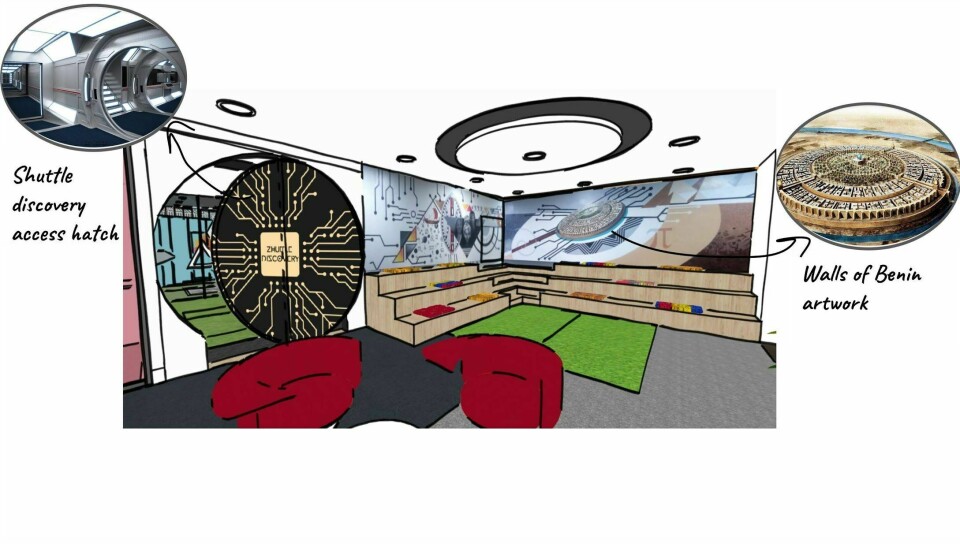
With that data, it's probably pretty simple to pitch Spacefinish to a company. But what was it like in the beginning to try and sell the first Spacefinish idea outside of Google? You're essentially coming into a stranger's space and saying 'you're doing this wrong.'
True. We were very lucky in that the first space we did was a Google office. It's Google. Everyone aspires to have a workplace like Google and people visiting the office were curious about how a space like that could exist in Nigeria. So there was a lot of interest but no commitments. Our first real commitment came from a company called Andela, a tech startup aspiring to be like the spaces you see in Silicon Valley. But they were looking to create a space just to meet their capacity and meet their head count, that was all. They thought they wouldn't be able to afford what we'd done for Google.
I went and pitched for them to do something different instead of creating the standard, generic workspace that we've all seen. Then I took our approach: connect the expense and cost of that project to the potential output of the team working there and how that could affect the company's bottom line. When we do that, it becomes an easier conversation to have. Once we are able to connect with the key decision makers and give them metrics they actually care about—like it's not about having a pretty space but about having a space that will allow people to achieve their short and long-term goals—they tend to be more receptive.
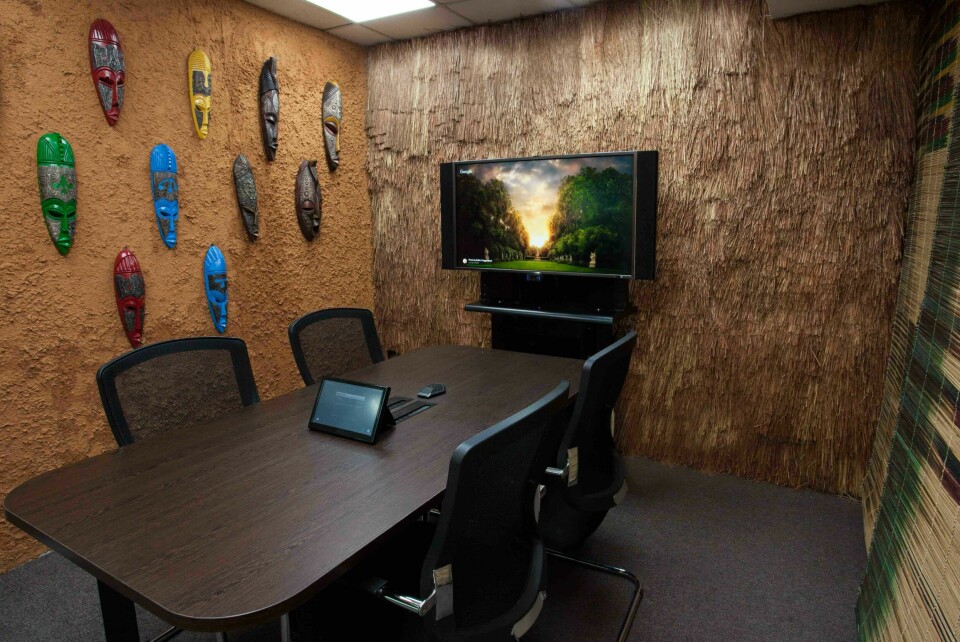
Do you feel like a bit of a disruptor or trouble maker?
I would say when we started we didn't feel like a disruptor. For me, it felt very natural because it was in line with what I was hired for and the world I was coming from. When you work at Google, you tend to live in an innovation bubble. So we didn't feel like disruptors while it was happening, but when we got people's reactions—the industry's reaction—then we realized that what we were doing was actually groundbreaking and very new to that part of the world.
Okay. And then what do you do after that? You just keep poking at that nerve?
Yeah. [Laughs] So what happens after that is the floodgates open up and we start to see a lot more demand than we can handle as a company. That gave me the confidence to quit my job at Google and do this full time. We are now starting to figure out how to do it to the best of our capacity at the same level, and sometimes surpassing, what our peers are doing across the world.
What do you find is the most important element within the workspace? How does Spacefinish highlight that?
People are the most important element in the workspace. One CEO said that his team was very unruly—weren't well composed. There is a mentality that we all subscribe to, especially coming from Nigeria where you see people at the local airports not obeying the rules. But those same people, as soon as they land in Heathrow, they're suddenly very compliant. They're the same people. The only thing that changed is their environment. New spaces can cause people to change their behavior—they morph into the space. For that client, the leadership was very happy that their team members began acting in the way they wanted them to act when we changed the space. The psychology of the whole thing is very interesting. That's why we take a human-centered approach to design, with a lot of qualitative and quantitative research before we begin.
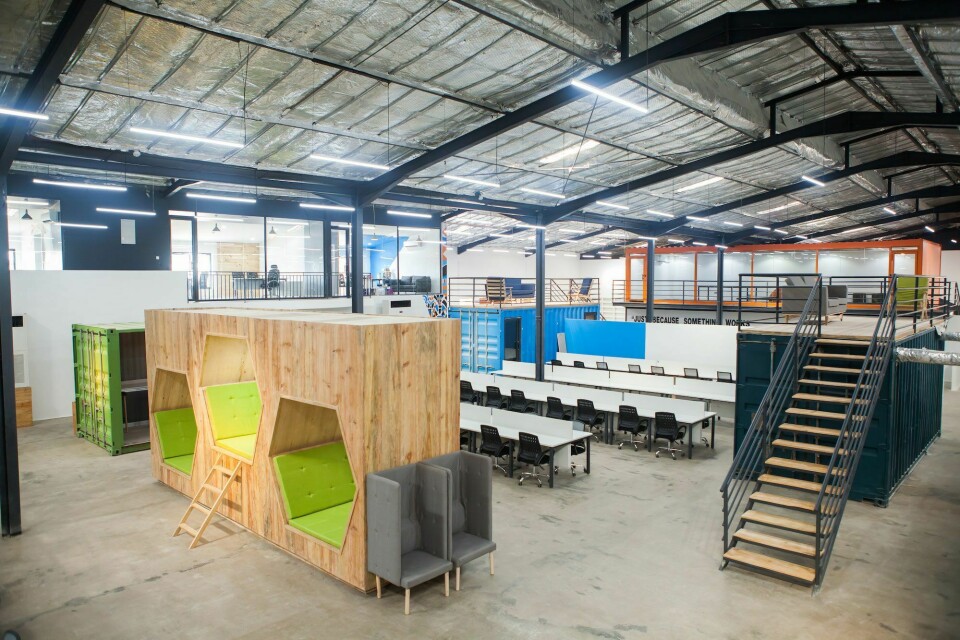
I'm originally from California and I grew up in Silicon Valley–it's a very peculiar place simply because of the concentration of resources. There are surely different challenges for a developer in Nigeria versus one in Silicon Valley. What is the most unique thing for you, after all your travels and experience, that makes designing for Nigeria special?
That's a really good question. You rarely find imagery of inland Africa that is progressive and modern. The first time in recent times was the Black Panther movie and that's why it was so huge. Kids could see a different version of what Africa could be in their collective imagination. I'm making this correlation because that is what I think is different for us, from a design standpoint. For example, the Google office in Nigeria looks very Nigerian. It has a lot of cultural nuances and it is locally relevant to the region, however it is a very sophisticated and modern space with all the right technology. There's videoconferencing, micro-efficiency, access control and security but with the backdrop of an African space. When people see that, it feels very fresh and new and there is so much content that we can use to inspire–from artwork to traditions–and we infuse all those things in to the spaces we're creating.
Do you have a favorite space you've done?
All the spaces we've done have been fantastic. But I think my favorite to date is the PwC office, it is an innovation hub and a huge cultural departure for PwC. They are more or less known as a rigid, stoic brand and they wanted a space that defied all of those things. So we created an innovation hub that was super, super, super futuristic and the first of its kind in West Africa. Anyone who knows interior fitouts understands that lines are straightforward but curves are complicated. This space has a lot of curves. That's difficult to do anywhere in the world but 10 times more complicated in Nigeria because we just don't have access to the right tools and technology that you will find elsewhere. But it came out very well and that has been my most exciting space so far.
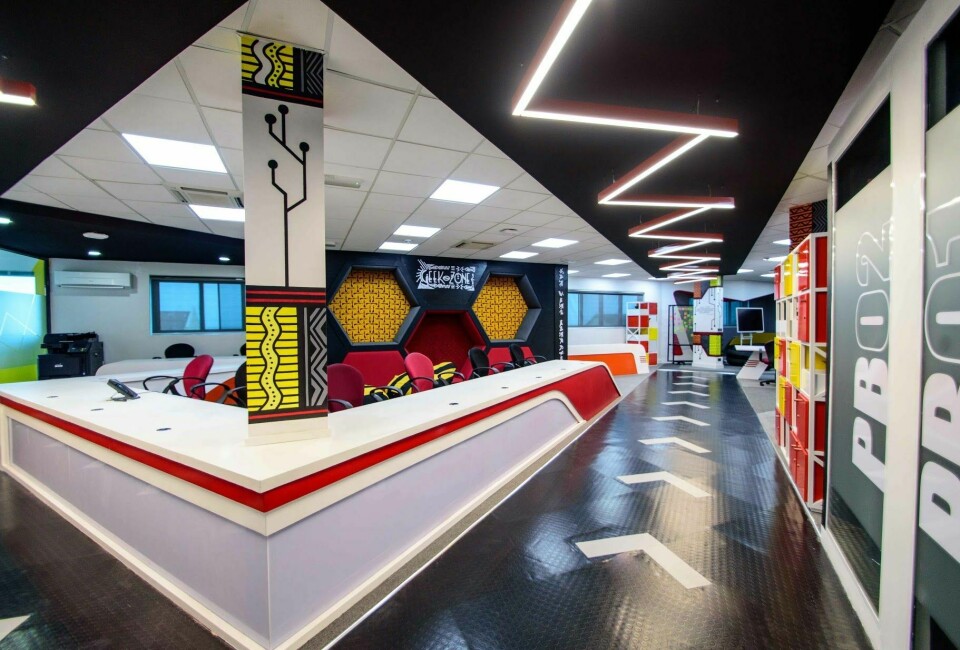
Was it also the most challenging?
It was, yes, because of the design ideas we wanted to achieve. We have things like revolving doors that were inspired by the hobbits' shire in Lord of the Rings and a single workstation that extends across the entire space. There are a lot of lights, floating elements and Nsibidi—an ancient African writing system that we used to create a new language. The artwork is very deep and gives a timeline of different instances in Africa where technology has inspired innovation. It was a very involved and challenging project. But we do the challenging things because we feel it allows us to move forward and push boundaries.
Sure. It's exciting for you and everyone you work with but also, I'd say, for the local contractors and artists doing the artwork.
You know, that is something that we do differently. Most architecture firms just design but we design and build. We do that because, when we started, no one in the market really understood what we were doing. We were asking for materials that didn't exist so we had to create our own. Also, everything we do is local, we don't import anything–which can be an even bigger challenge. But we want to know that we are helping to build industries here in Nigeria, we want to help fix the lack of resources in this part of the world. We could import but it doesn't help the community and economic infrastructure in the long run.
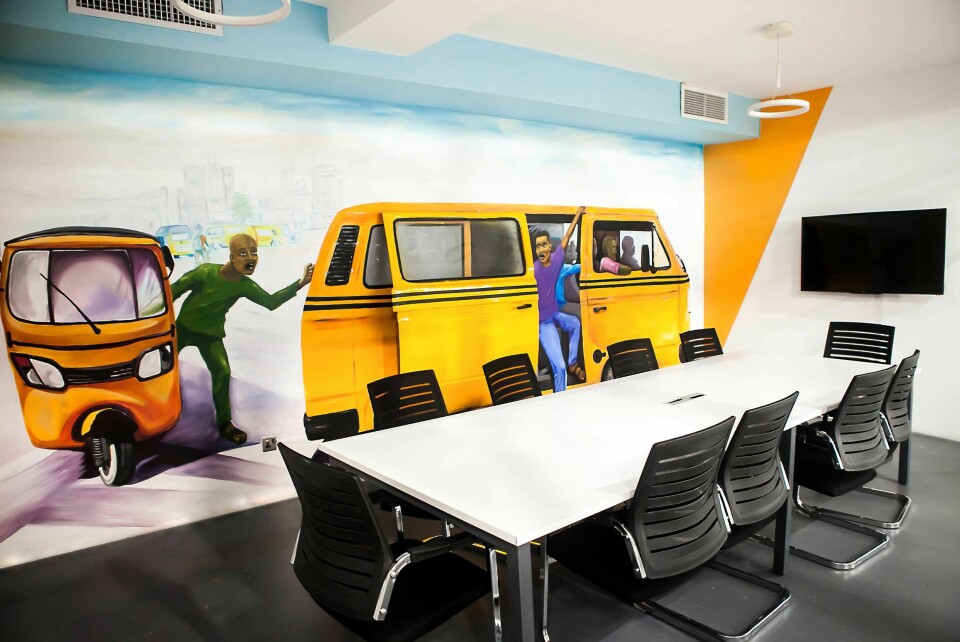
Are there any plans to venture outside of offices and corporate workspaces with your human-centered approach? Classrooms, waiting rooms, etc.?
We are actually about to embark on our first non-office project. We are designing and building the interior of two international airports in Nigeria: Lagos and Port Harcourt. Two very massive projects that we couldn't say no to because...no one says no to international airports [Laughs]. So it's a good way to toss us into things outside of the workspace. So everyone should come fly to Nigeria and check it out when we're finished.
Catch Nereya on her Instagram.

